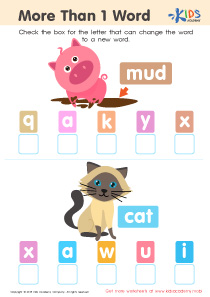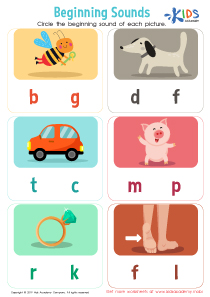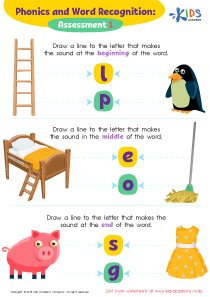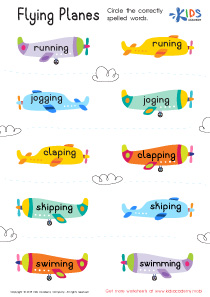Ending Sounds Worksheets for Ages 4-5
4 filtered results
-
From - To
Ending Sounds Worksheets for Ages 4-5
Unlock the world of phonics for your preschooler with our engaging Ending Sounds worksheets, specially designed for children ages 4-5. These fun and educational worksheets are crafted to boost your child's recognition and pronunciation of ending sounds, laying the foundational skills necessary for reading fluency. Through a variety of interactive activities, your child will explore the joy of learning while seamlessly mastering the concept of ending sounds. Each worksheet is tailored to the learning capacity of young minds, ensuring an enriching experience that fosters a love for reading and language. Embark on this phonetic adventure with your child today!
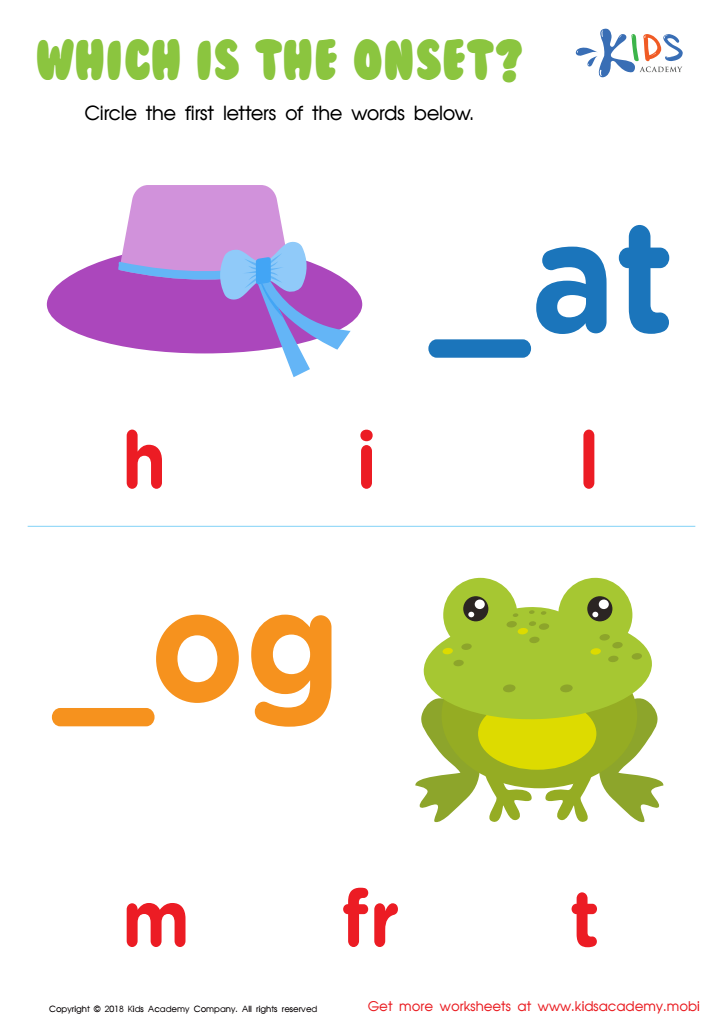

Which Is the Onset? Worksheet
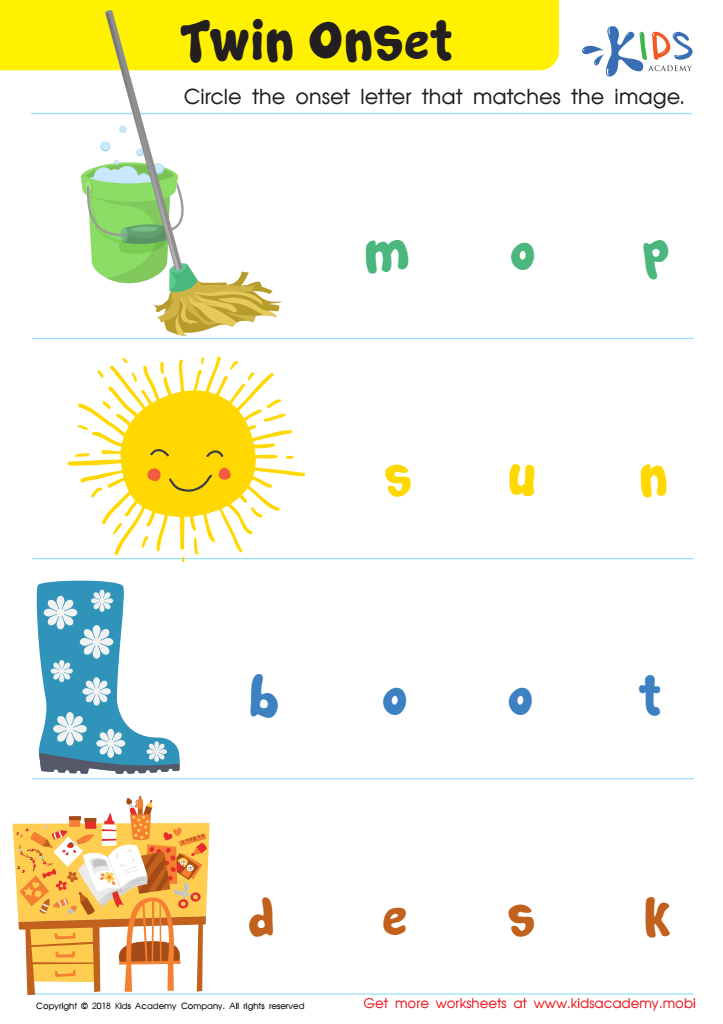

Twin Onset Worksheet
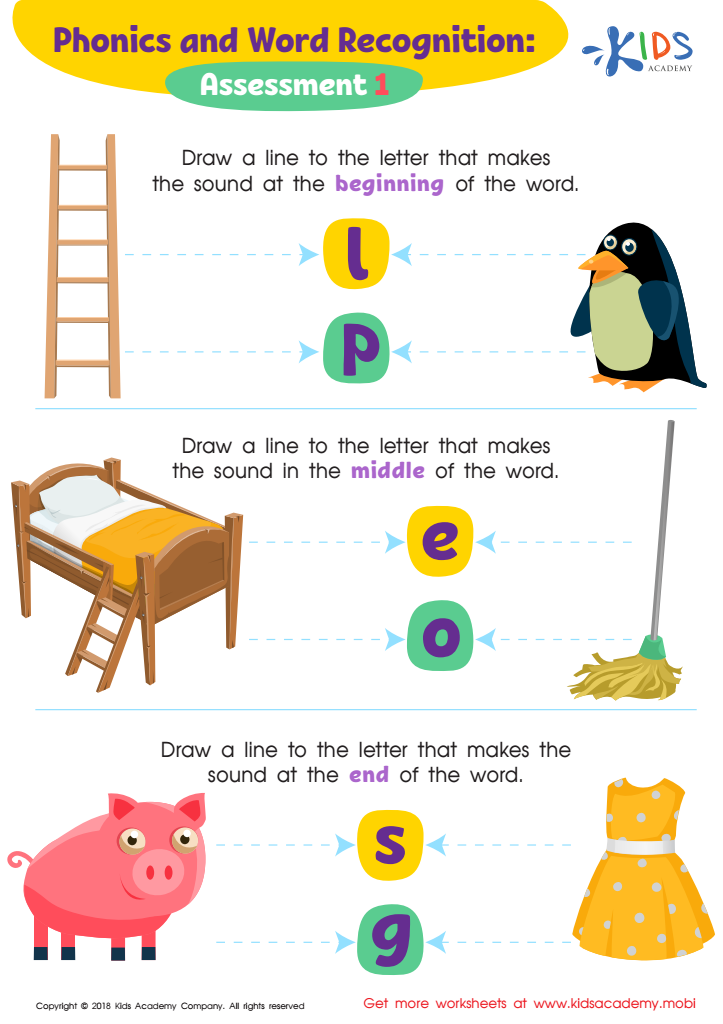

Phonics and Word Recognition: Assessment 1 ELA Worksheet
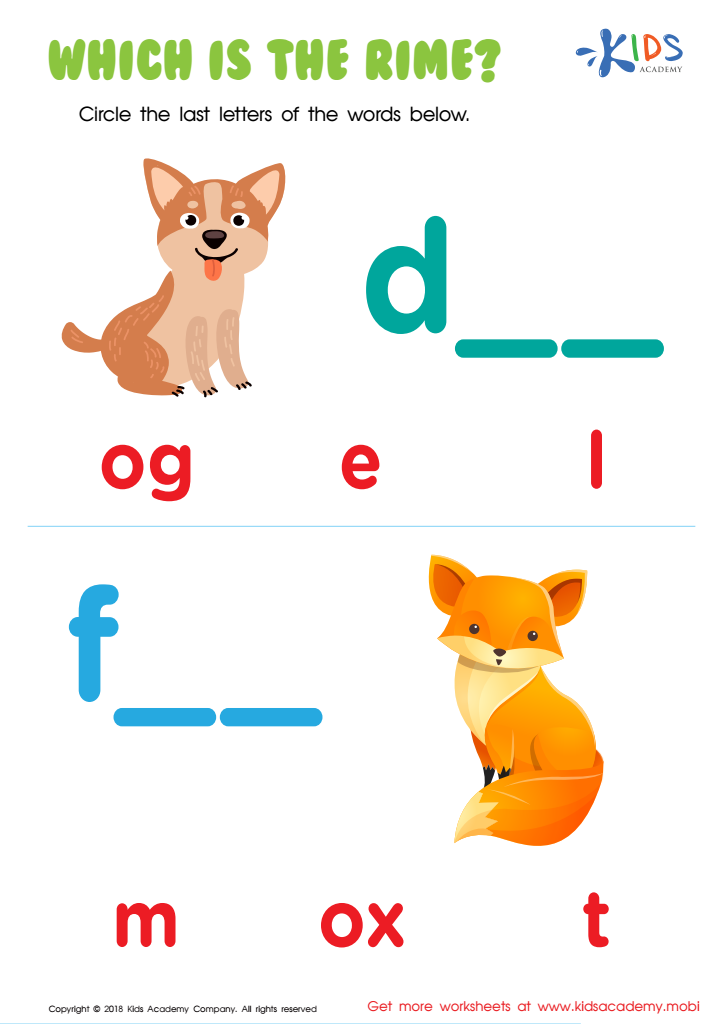

Which Is the Rime? Worksheet
Worksheets focused on Ending Sounds for Ages 4-5 are an invaluable tool in the early development of literacy skills in young learners. At this critical age, children are in the process of mastering the basics of phonics, a foundational step towards fluent reading and clear articulation. Ending sounds, specifically, are a crucial element of this learning phase, enabling children to understand how words are structured and how they can be manipulated to form new words or meanings.
Utilizing Ending Sounds worksheets for Ages 4-5 not only reinforces the recognition of these sounds but also enhances a child’s ability to differentiate between similar-sounding words, a skill essential for both comprehension and vocabulary building. Through engaging exercises and repetitive practice, children become adept at identifying the final phonemes in words, laying a strong foundation for spelling and reading abilities.
Moreover, these worksheets are designed with the age-specific cognitive capabilities of 4-5-year-olds in mind, ensuring that the activities are both stimulating and accessible. This targeted approach helps in capturing the interest of young learners, making the educational process enjoyable and effective. As children navigate through the puzzles, matching activities, and coloring tasks centered around ending sounds, they not only learn but also develop a love for learning, setting the stage for lifelong educational engagement.
 Assign to the classroom
Assign to the classroom




